The Barber Vintage Motorsports Museum Part 2 – With Phil Aynsley
Part Two of a look inside the Barber Museum – The Early American area.
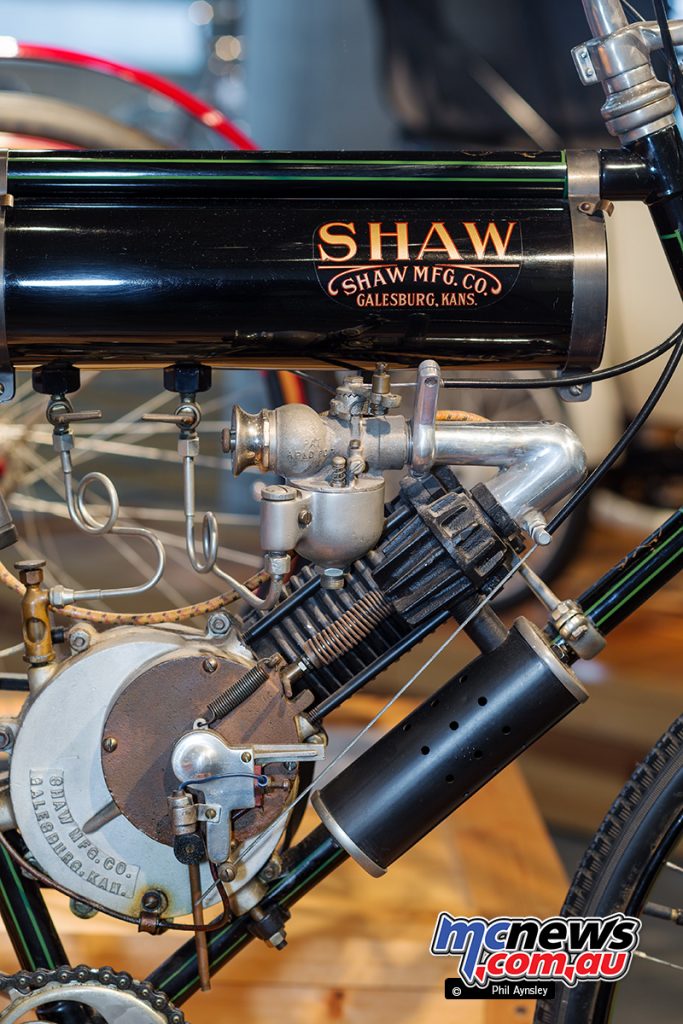
1909 Shaw. Stanley Shaw of Galesburg, Kansas invented this “motorcycle attachment,” a 241cc motor for bicycles in 1903 and eventually some 13,000 were produced. The output of 2.5hp was enough to give a top speed of 48km/h.
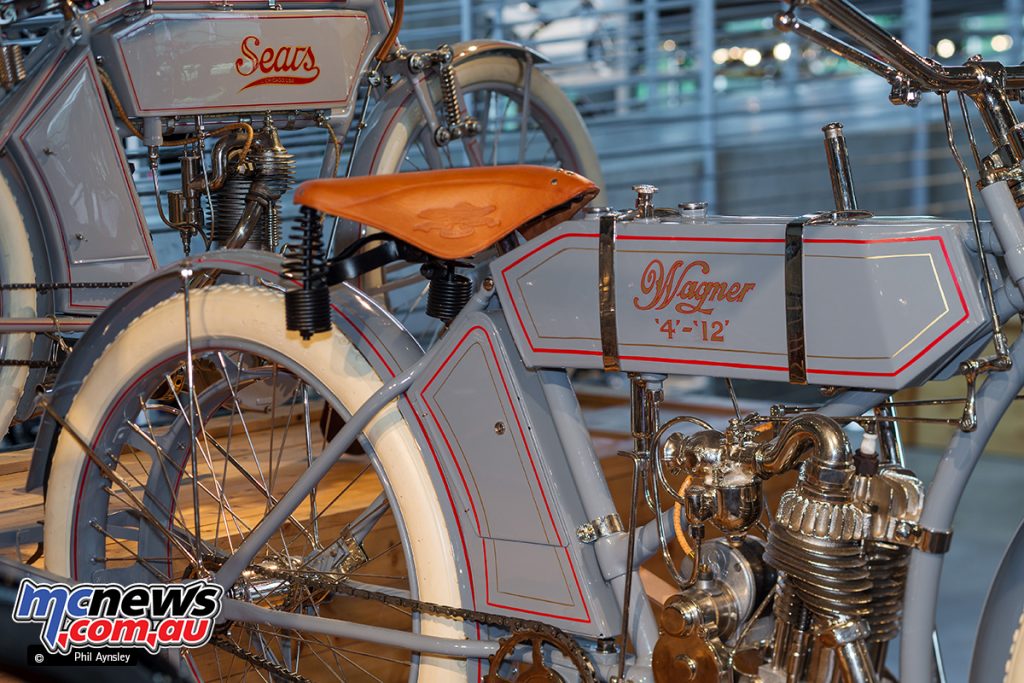
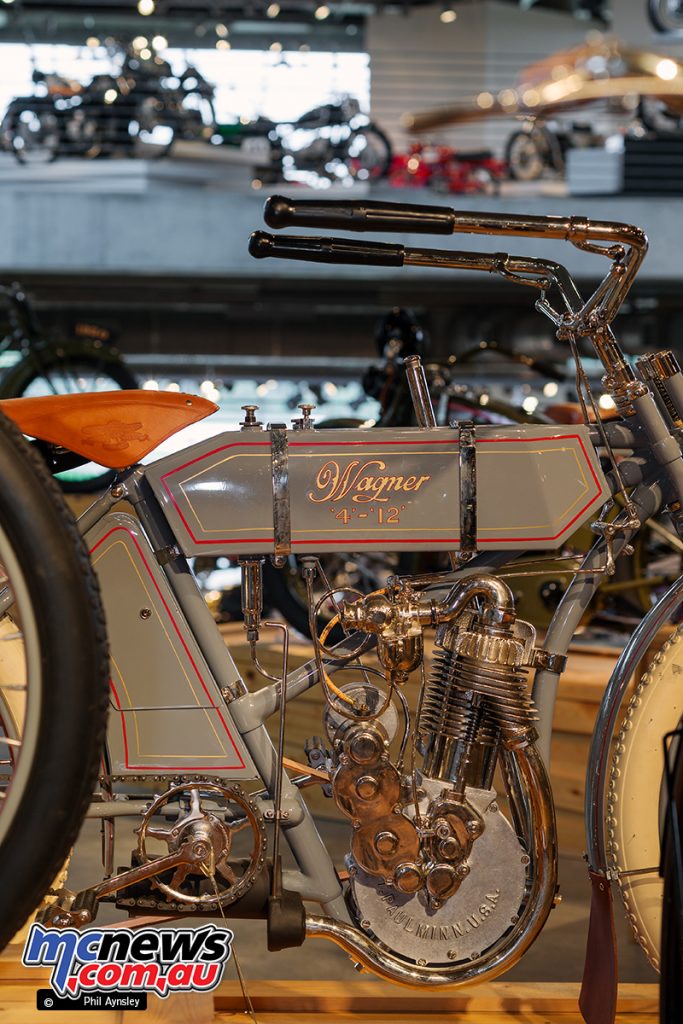
1912 Wagner 4-12. Some 8,500 Wagners were produced between 1901 and 1914 with many being used as rural post bikes due to their durability. The 447cc single made 4hp and provided a top speed of 80kph.
1911 Excelsior Autocycle. Typical of this period the single cylinder motor used an atmospheric inlet/mechanical exhaust valve arrangement. Its 491cc and 4hp gave a top speed of 70kph.
1910 Sears Autocycle. Available by mail order, Sears sold many different manufacturers’ bikes under their own name – this is actually a Thor. Its 319cc was good for 4hp and 70kph.
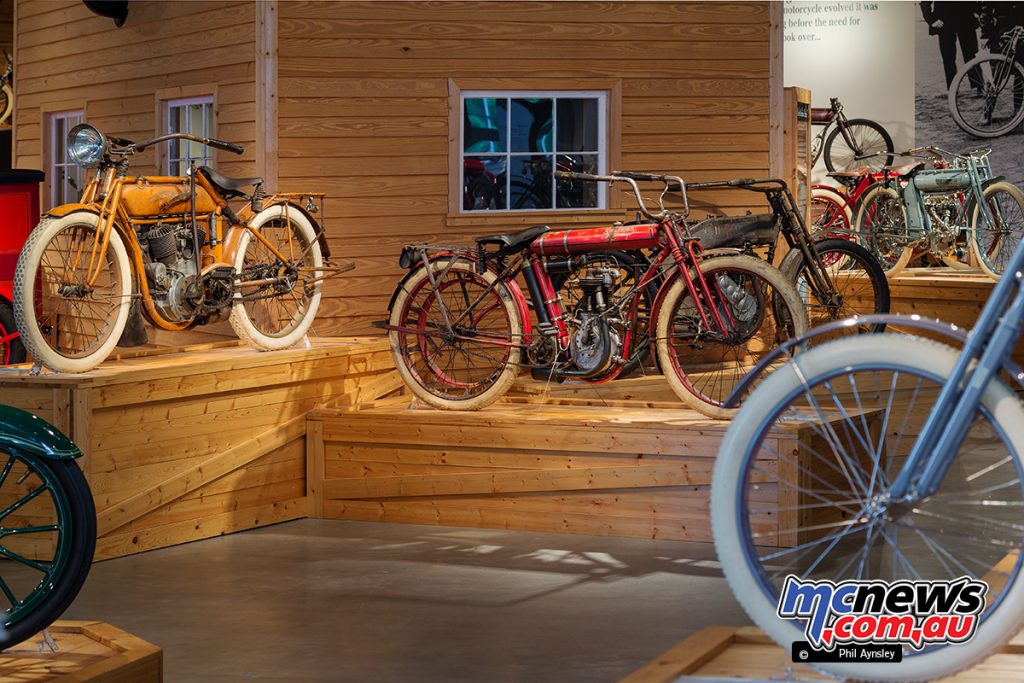
1913 Flying Merkel Model 71 (left) and 1912 American (middle).
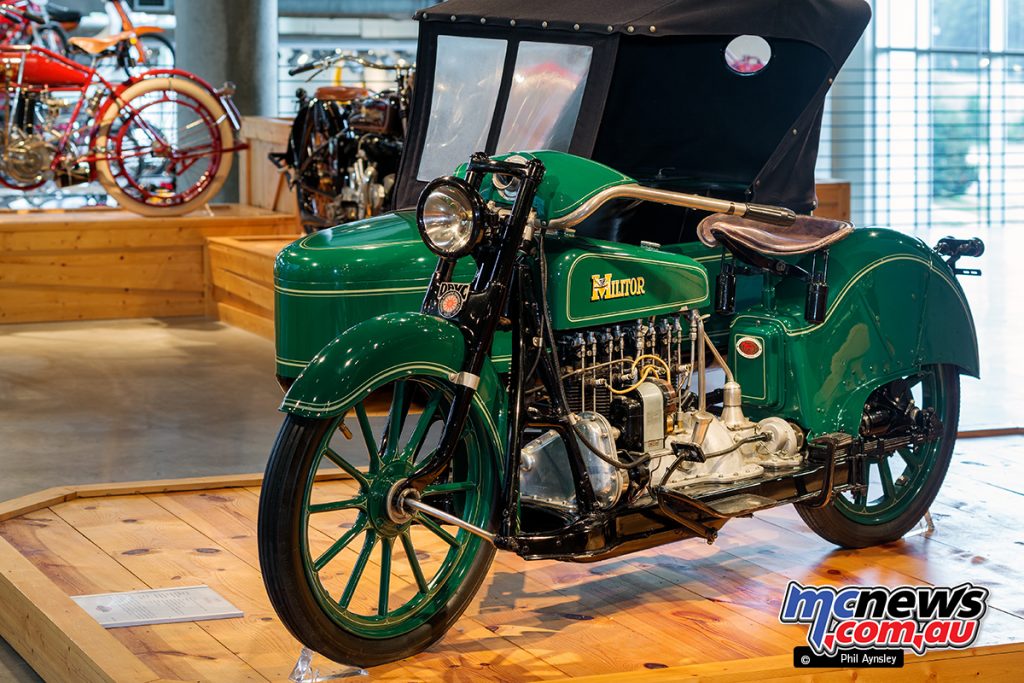
1920 Militor (Militaire) and sidecar. The Militaire Autocycle Company built its first strange machines in Ohio prior to 1916. Despite appearances it is not a hub centre design, steering is via a steering wheel and retractable rear outrigger wheels and was powered by a single cylinder engine.
After that venture folded designer N.R. Sinclair moved to Buffalo, NY and produced an improved model, now named the Militor. This 1920 machine used a four-cylinder 1306cc motor producing 11hp, a three-speed ‘floor’ shift (plus a reverse) and shaft drive.
28 inch Goodyear tyres were fitted to wooden artillery wheels. The US Army bought a few machines in 1918 but with a weight of some 360kg they did not cope with the muddy conditions in France. The company folded in 1922.
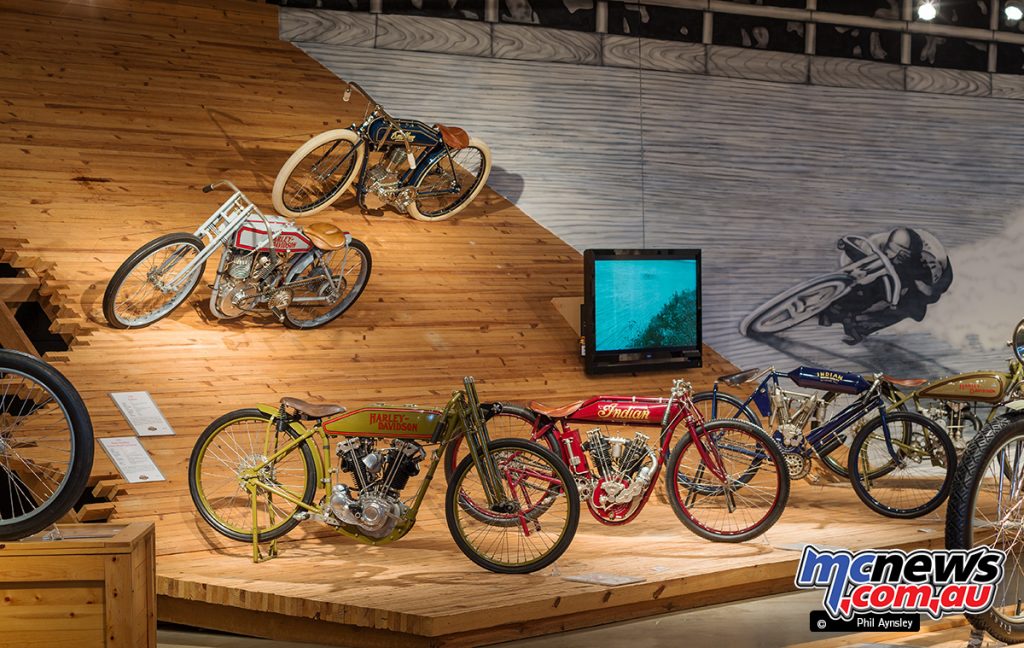
Most of the board racers are beautifully displayed on a section of wooden track which gives a great idea of their natural habitat.
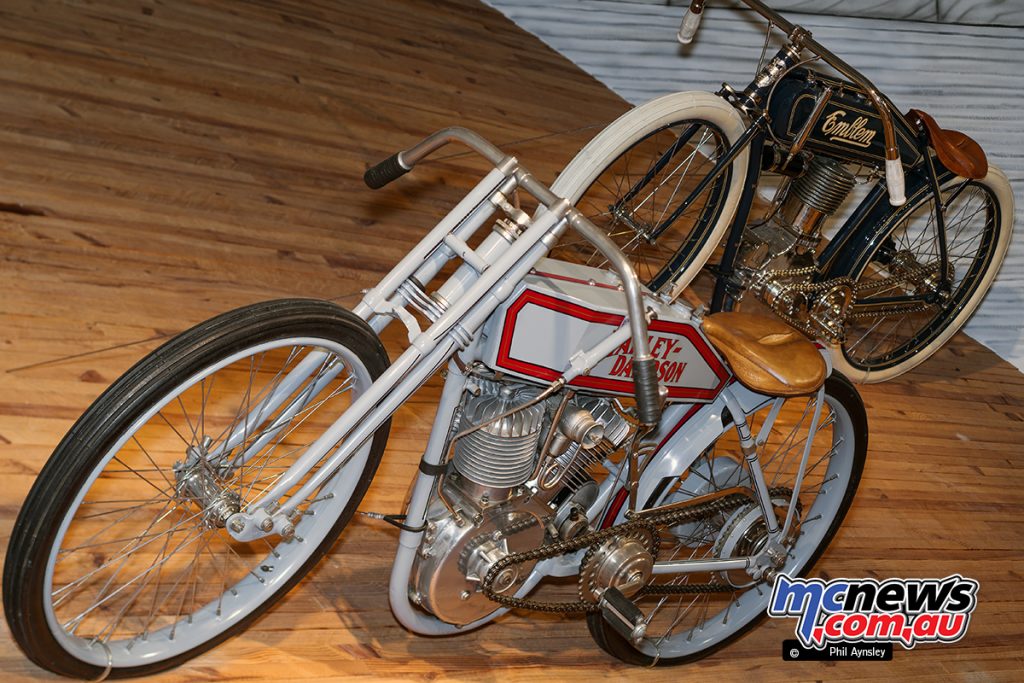
This 1915 Harley Davidson board track racer, is one of the few factory racers built. It used an inlet over exhaust valve arrangement, known as a “pocket valve” motor. The race team’s 1000cc bikes were said to approach 20hp and provided a top speed of over 160km/h.
Behind is a 1912 Emblem. Based in New York state, Emblem produced a wide range of road bikes from 1909 to 1925. During 1912-13 however they built a few board track racers. The 600cc single made 7hp, good enough for 110km/h.
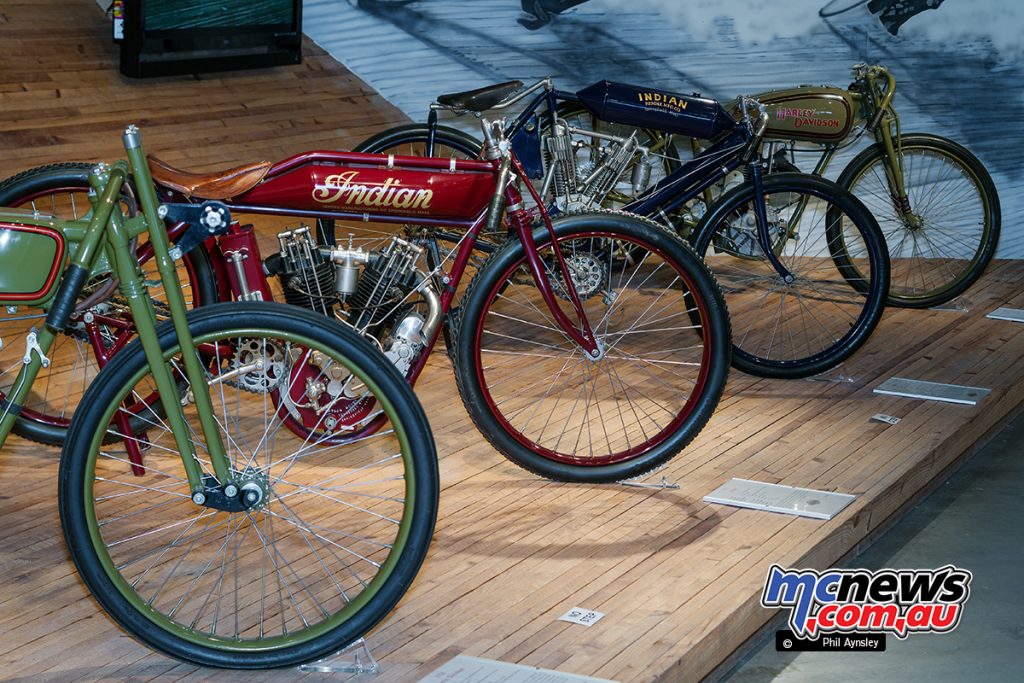
From left to right: 1920 Harley Davidson 8-Valve, 1912 Indian 8-Valve, 1908 Indian, 1929 Harley Davidson Peashooter.
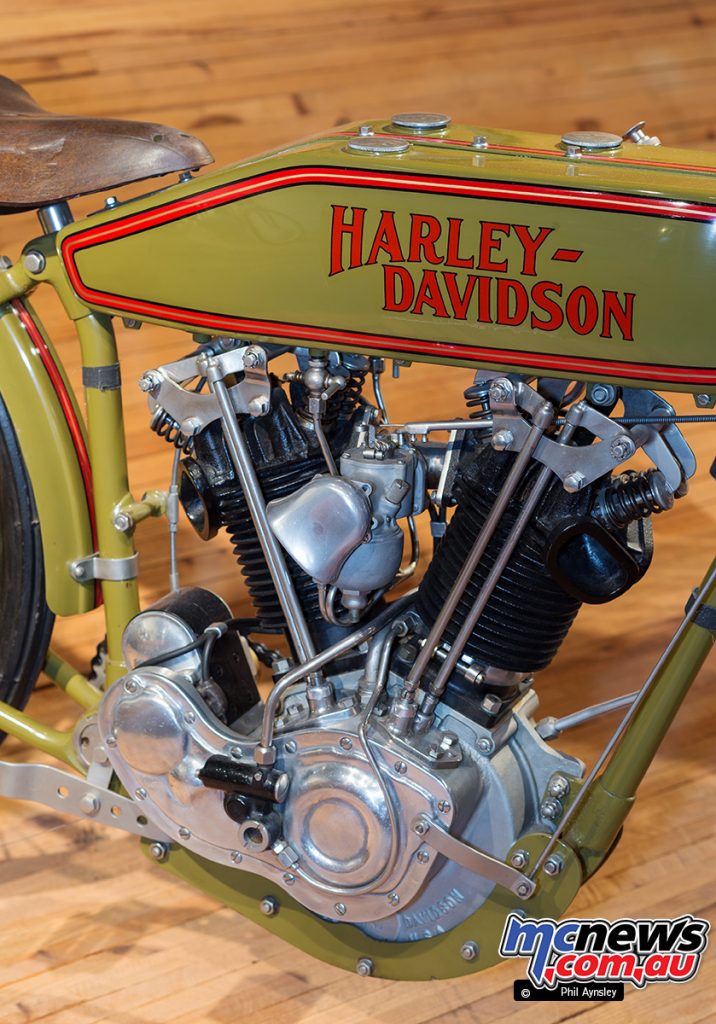
A 1920 Harley Davidson 8-Valve. The HD 8-Valve board track racer was an extremely advanced design for the time. First built in 1916 they were campaigned until 1928 with great success.
There is some dispute about the number constructed, with a range from eight to 50 likely. The rules required that the factories made their racers available for sale but didn’t specify a price, so HD priced the 8-Valve at an outrageous $1,500 to ensure that the factory race team were the only users. The 987cc motor produced up to 16hp, giving a top speed of 185km/h.
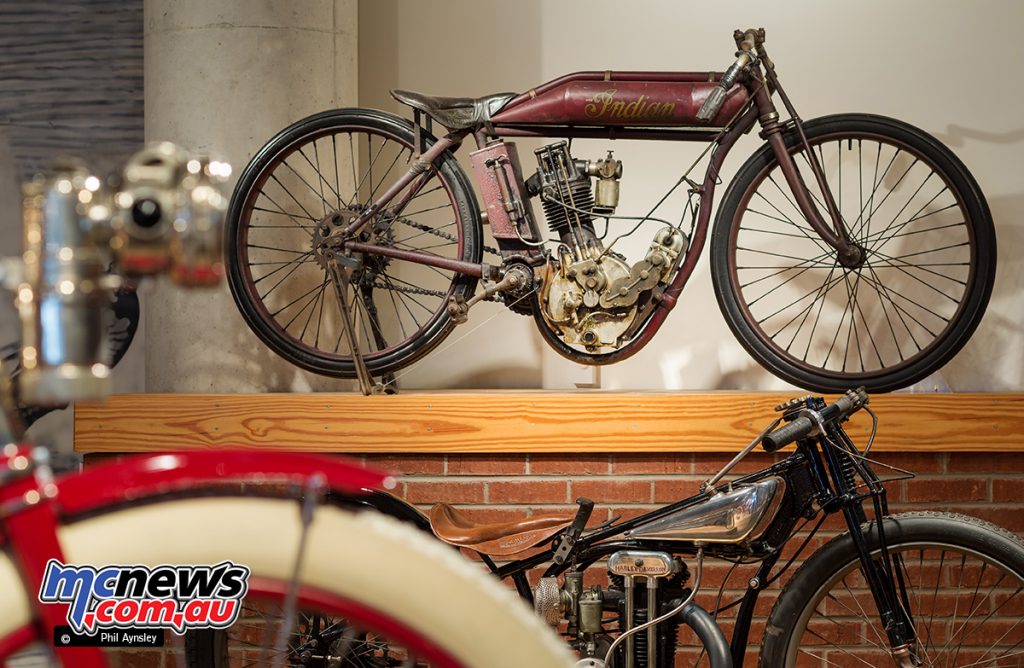
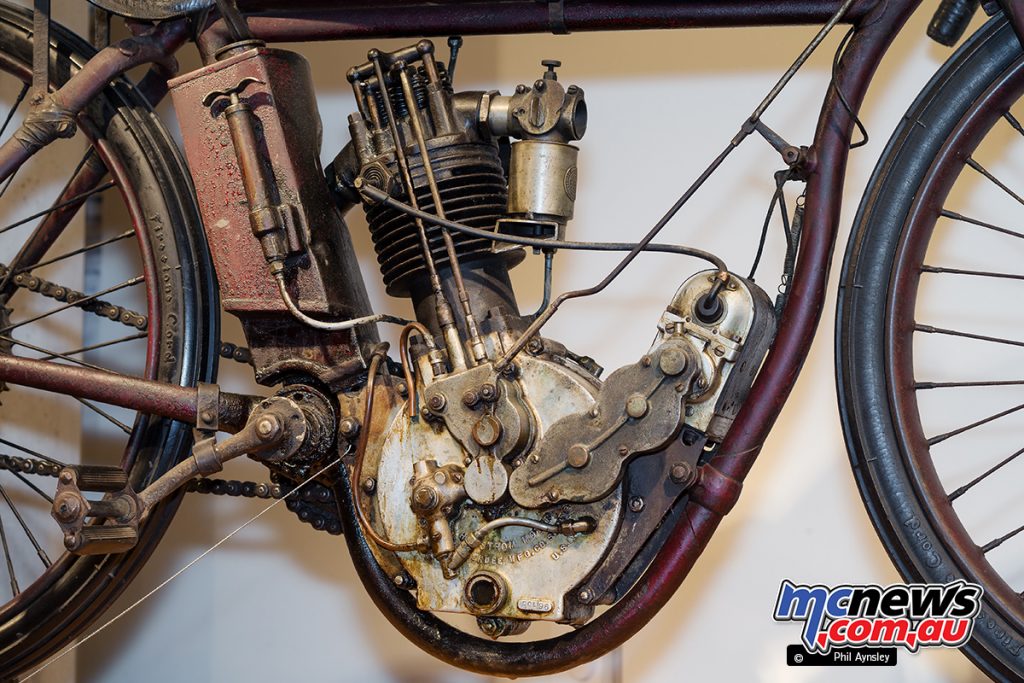
A 1912 Indian 500cc, in original, after race condition, is lovely to behold. It is also in full running order! About 50 of these 500cc four-valve racers were built and had a top speed of almost 160km/h.
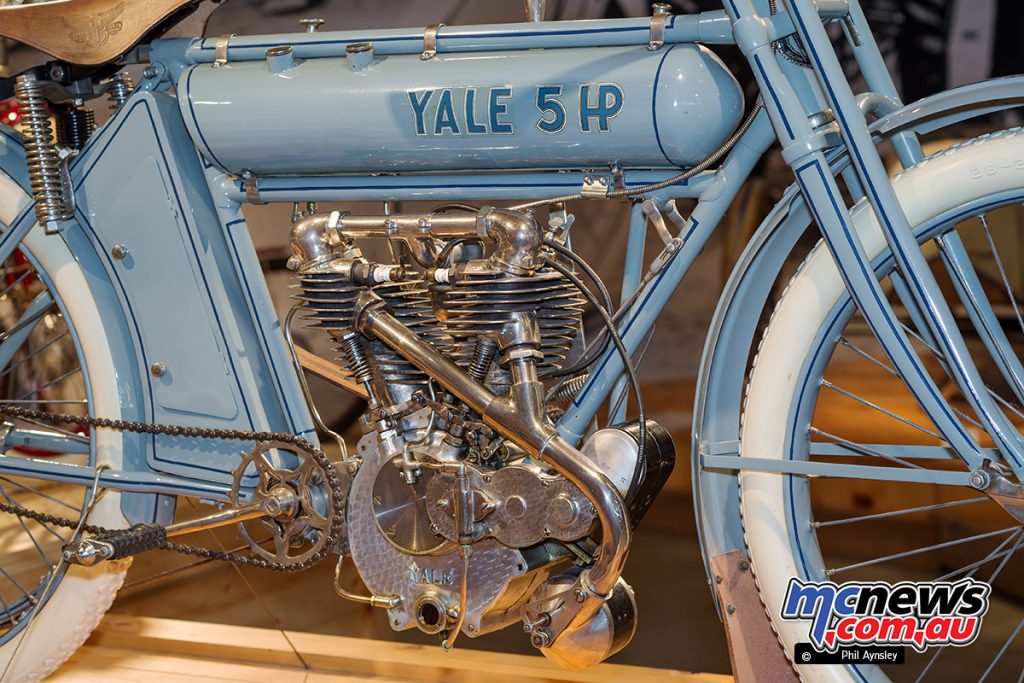
Originally founded as the California Motor Company by Roy Marks, it built America’s first motorcycle in 1896. In 1902 one of their bikes was ridden from their home city of San Francisco to New York.
Soon after Consolidated Manufacturing bought the company and moved production to Ohio, selling the bikes under the Yale-California name. It was with the introduction of new designs in 1906 that the California name was dropped.
The Model 25 twin was introduced in 1910 and was regarded as a “gentleman’s” bike, with its classy blue/grey and polished nickel finish. The 998cc V-twin made 5hp and provided a top speed of about 90km/h.
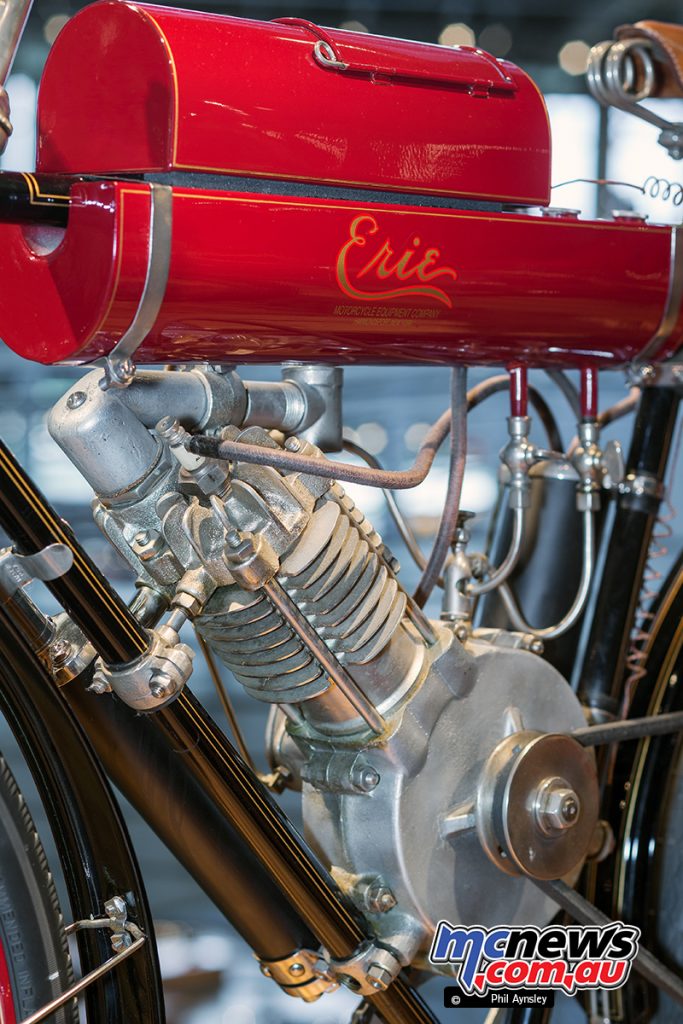
The first product of the Buffalo, NY based Motor Bicycle and Equipment Supply Company was the Mesco attachment for bicycles. It had a choice of friction or belt drive from the 1.75hp motor.
In 1906 the company’s name changed to the Motorcycle and Equipment Supply Company, also the Erie name replaced Mesco and manufacture moved to Hammondsport, NY. Power from the 268cc motor was up to 2hp, good enough for a top speed of 65km/h. The Erie name disappeared in 1909 when the company again reorganised.
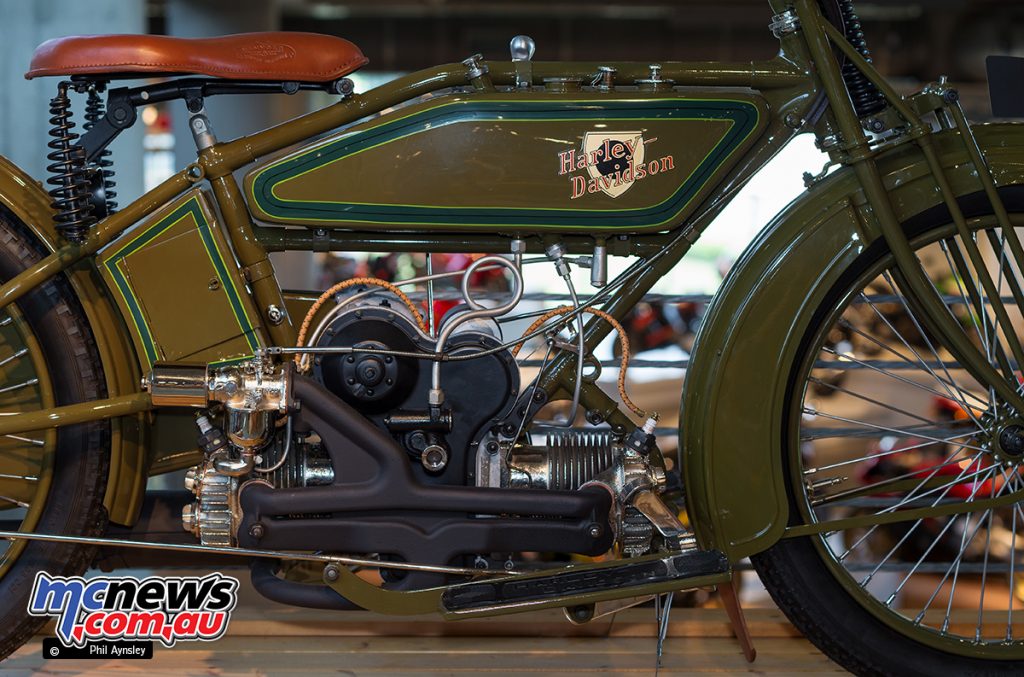
Unique in Harley Davidson’s history is the W Sport Twin. Developed in 1919 the 584cc longitudinally mounted flat twin made 6hp and was modeled on the popular English Douglas.
It did not prove popular in the US and was discontinued in 1923. This bike was originally exported to Australia before recently returning to the US for a full restoration in the museum workshop.
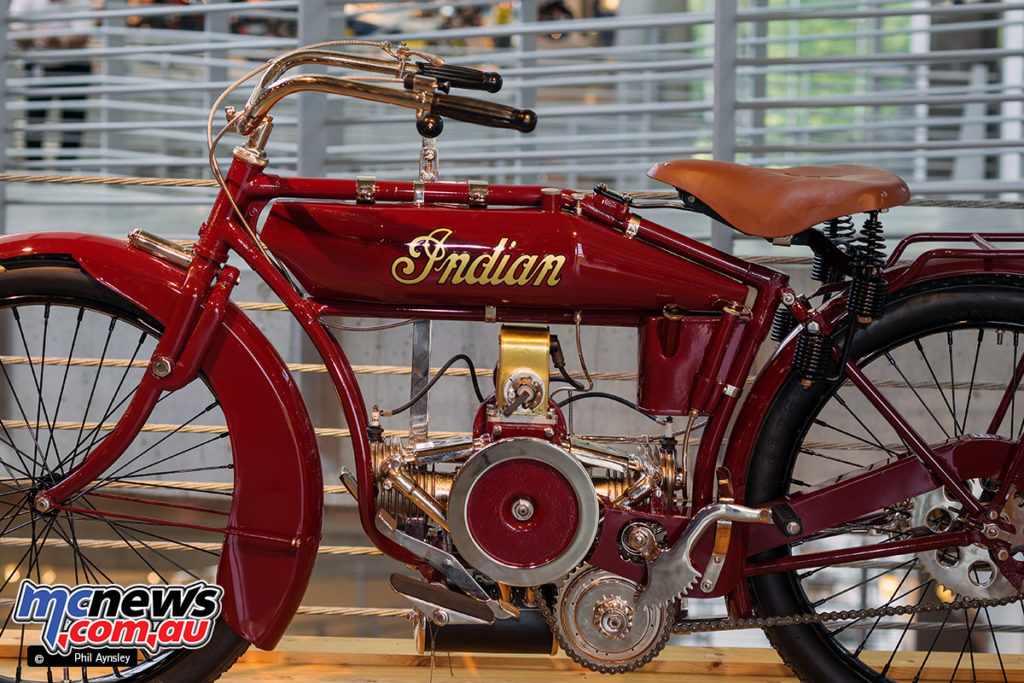
Also influenced by the Douglas was Indian’s Model O Light Twin. Designed as a lightweight entry-level model for young riders it was not a success and was discontinued after only two years.
The 257cc longitudinally mounted flat twin made 4hp and was good for a top speed of 58km/h. This bike still has its 1917 Massachusetts license tag!
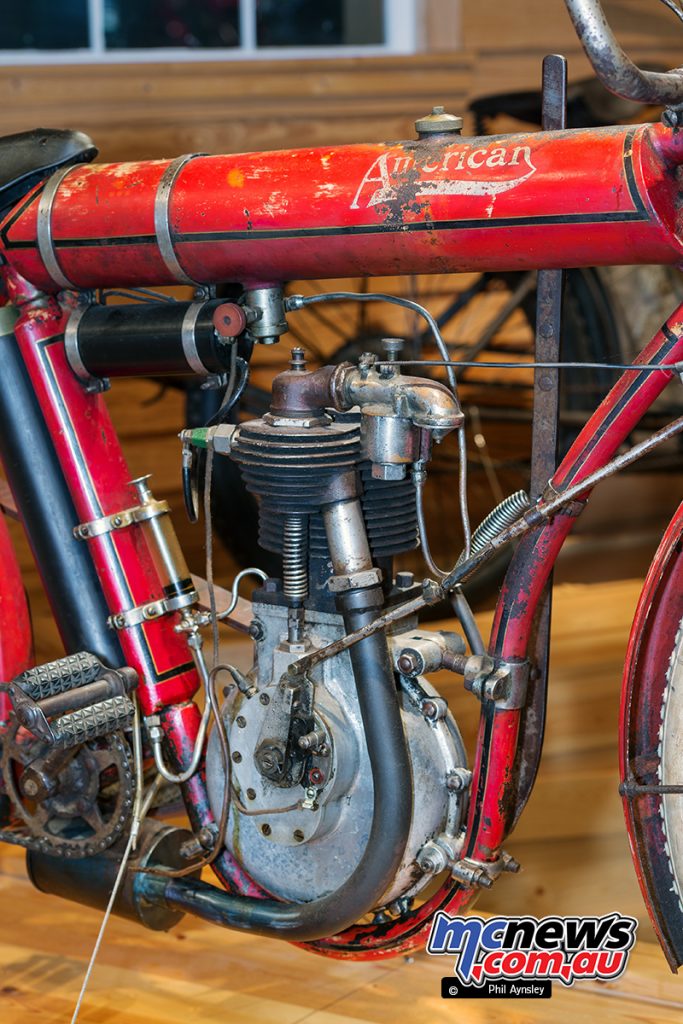
One of several US brands named “American”, this is from the Chicago, IL based company. In fact this company bought motorcycles from other manufactures such as Armac, Yale and Thiem, then repainted them and sold them as Americans. This is a Armac machine with a 376cc 3hp motor, good for 55km/h. Interestingly the fuel and oil are carried in the frame.
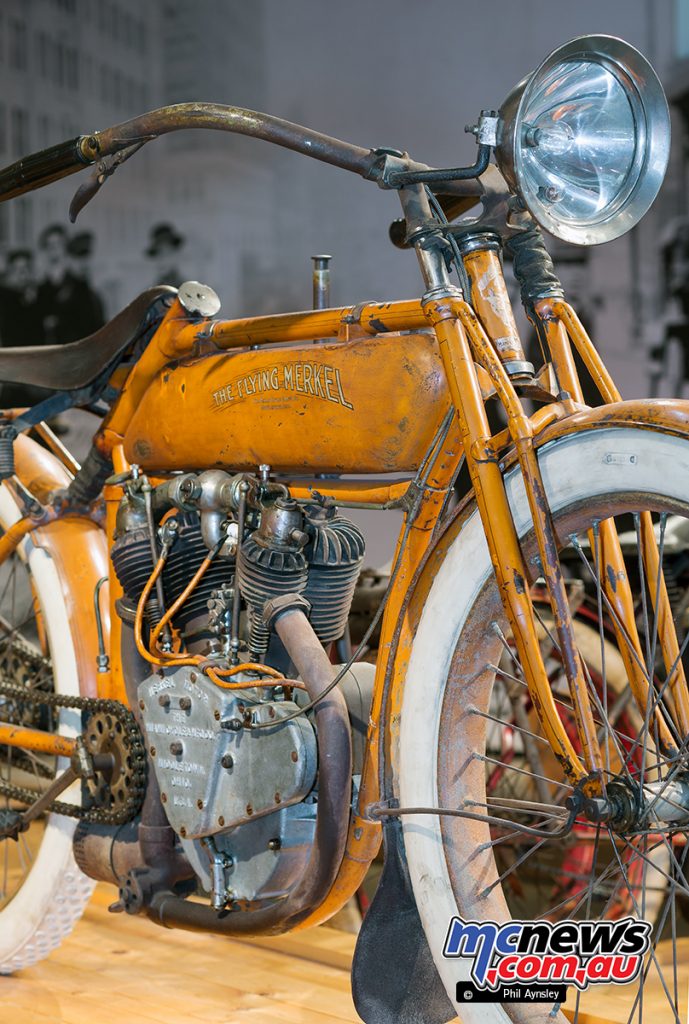
This 1913 Flying Merkel Model 71 (or 471) is in excellent unrestored condition. Merkels were renowned for their excellent ride, due to the use of both front and rear suspension.
The 1000cc V-twin motor employed many ball bearings – which ended up causing the brand’s demise in 1917 when they were no longer able to be sourced from the German Hess-Bright firm. The Model 71 was an economic, single-speed model with chain final drive. Power output was 7hp and top speed 100km/h.
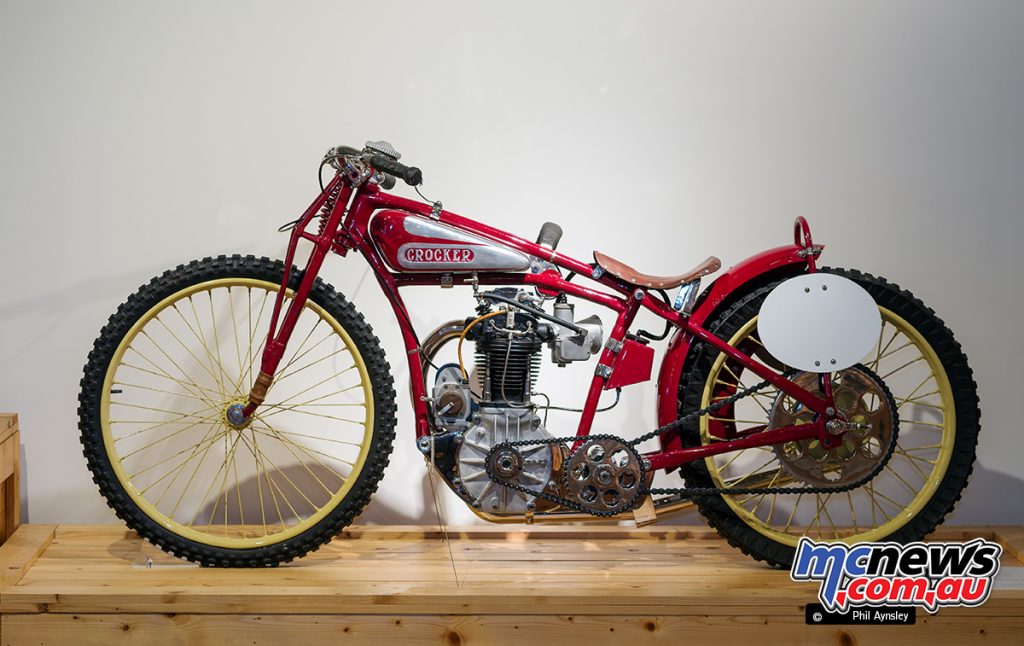
Albert Crocker worked as a designer for both Thor and Indian before becoming an Indian dealer, first in Denver, finally in Los Angeles. In 1932 he started his own manufacturing concern with an OHV conversion for the Indian 101 Scout engine to be fitted in a speedway frame of his devising.
The following year he and Paul Bigsby designed a 500cc speedway bike which debuted in late 1933, winning nine of the 12 heats that evening. Only 31 were produced before he turned his attention to his more famous V-twin road bike.
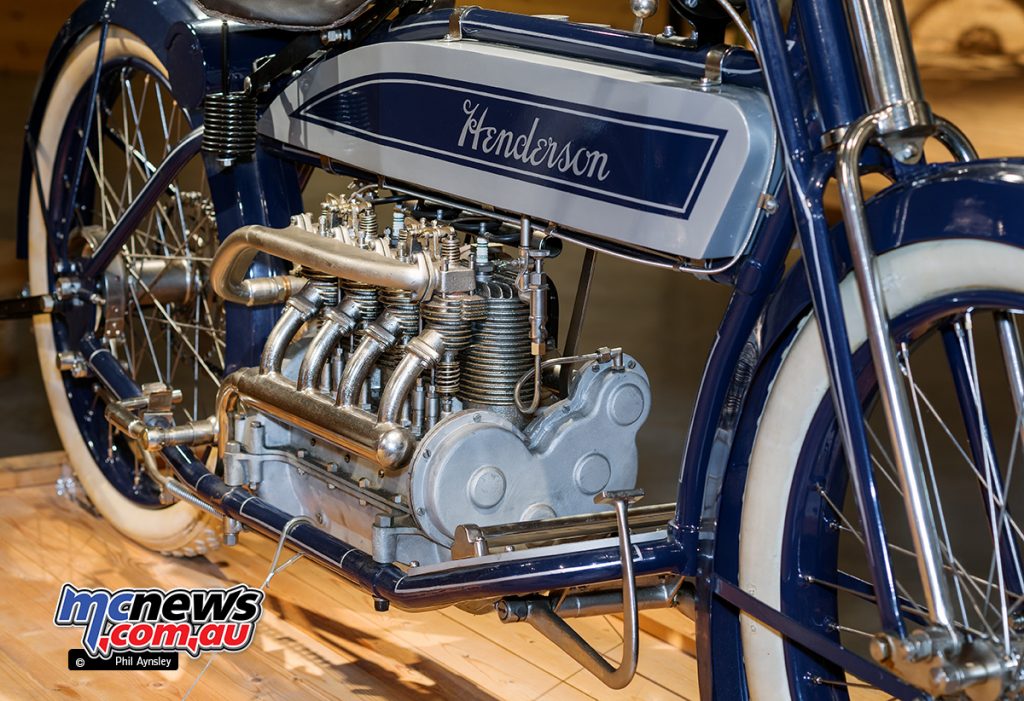
Inspired by the popular Belgian F.N. four-cylinder design, the Henderson brothers formed their company in 1911 and built their first motorcycle. Production of the Henderson Four began the following year.
The 934cc longitudinally mounted four made 7hp and had one of the highest top speeds of the time of 95km/h, which meant it was used by many police forces. The Model B was released in 1913 and featured improved girder forks, a rectangular fuel tank and stronger brake.
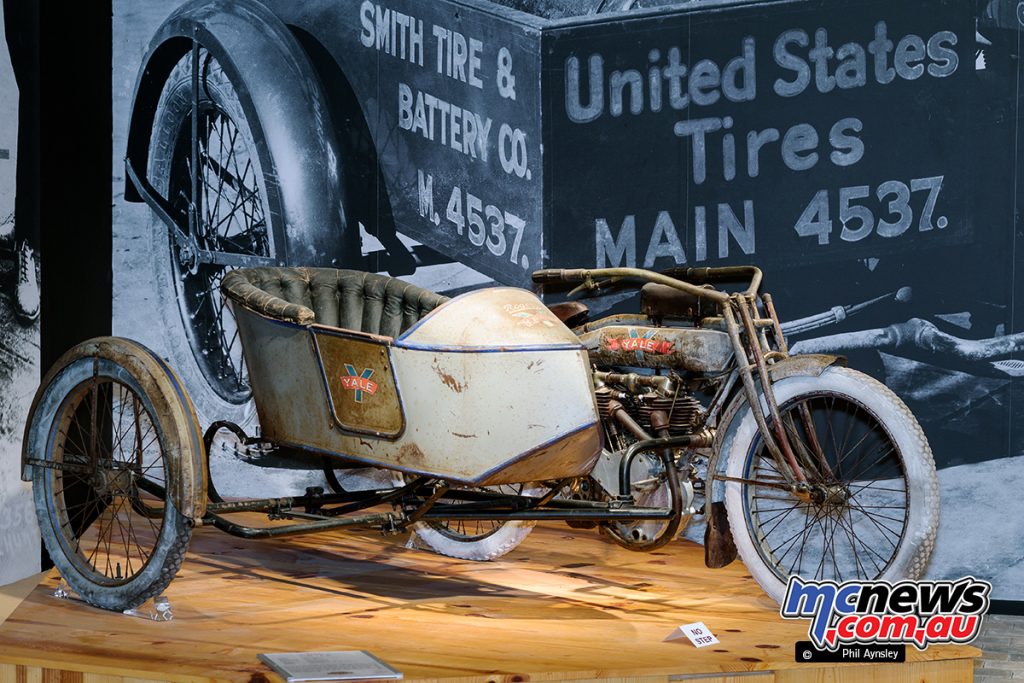
Originally founded as the California Motor Company by Roy Marks, it built America’s first motorcycle in 1896. In 1902 one of their bikes was ridden from their home city of San Francisco to New York. Soon after Consolidated Manufacturing bought the company and moved production to Ohio, selling the bikes under the Yale-California name.
It was with the introduction of new designs in 1906 that the California name was dropped. This 1913 7hp model is reputedly the most original unrestored Yale to survive. The wide-track sidecar (so it could use wagon ruts) was built by the Rogers Manufacturing Co. who colour matched them to any standard motorcycle.
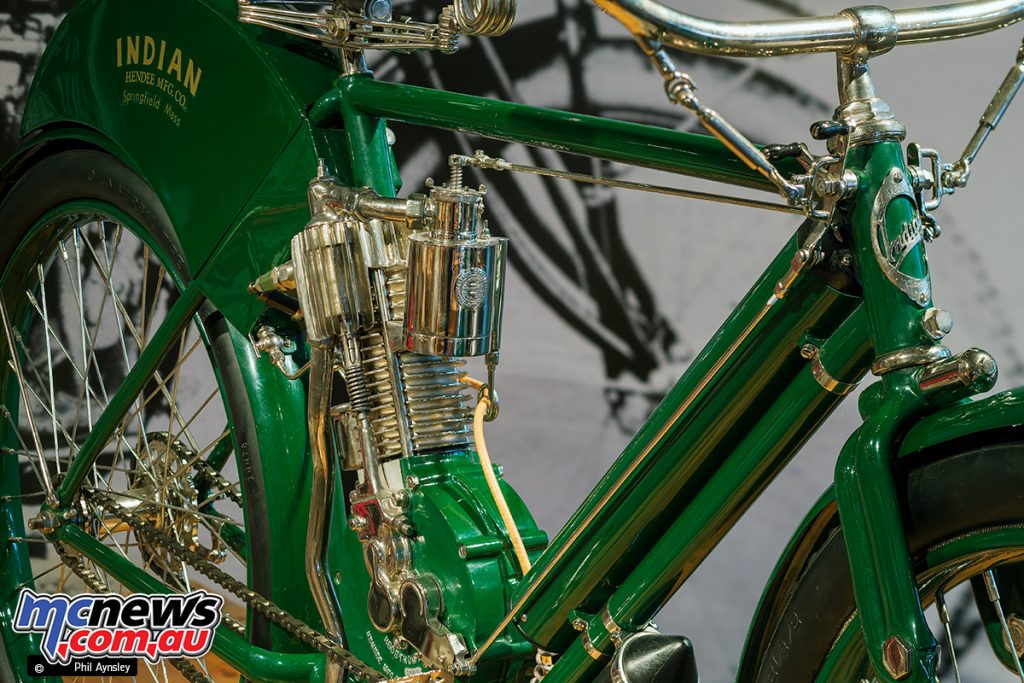
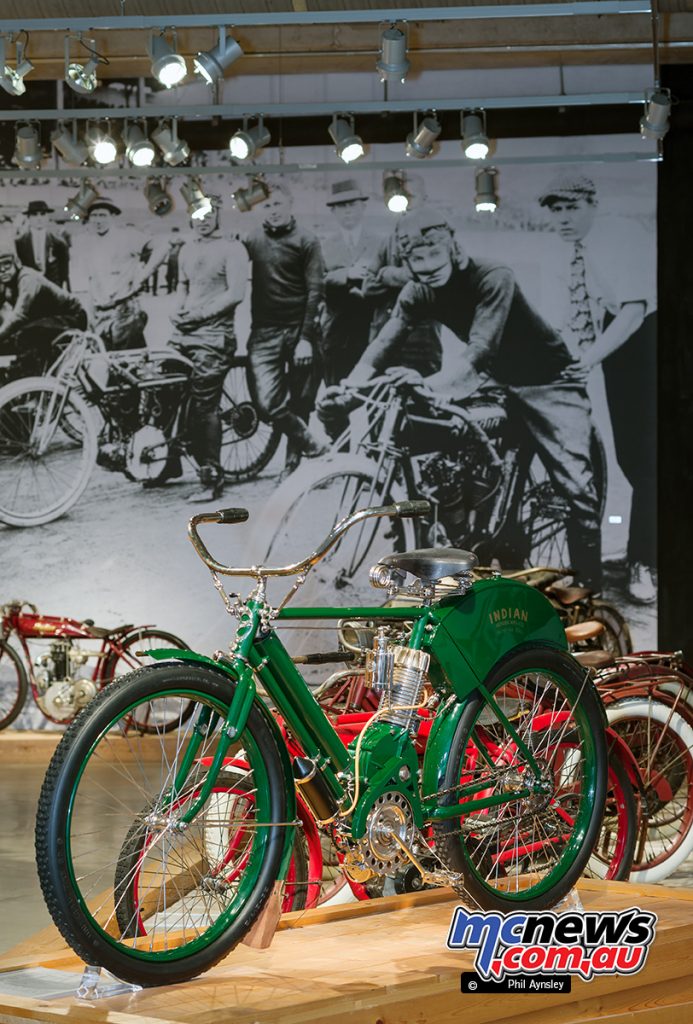
The very first Indian motorcycle was the 1901 Single, known as the “camel-back” due to its curvaceous fuel tank mounted over the rear wheel. This is a 1905 manufactured example.
Its diamond frame incorporated the engine’s rearward sloping cylinder as a structural element. The 260cc design made 2.25hp which propelled the lightweight bike to a cruising speed of 30km/h, with top speed being 48km/h. No brakes were fitted – slowing down was by back-pedaling!
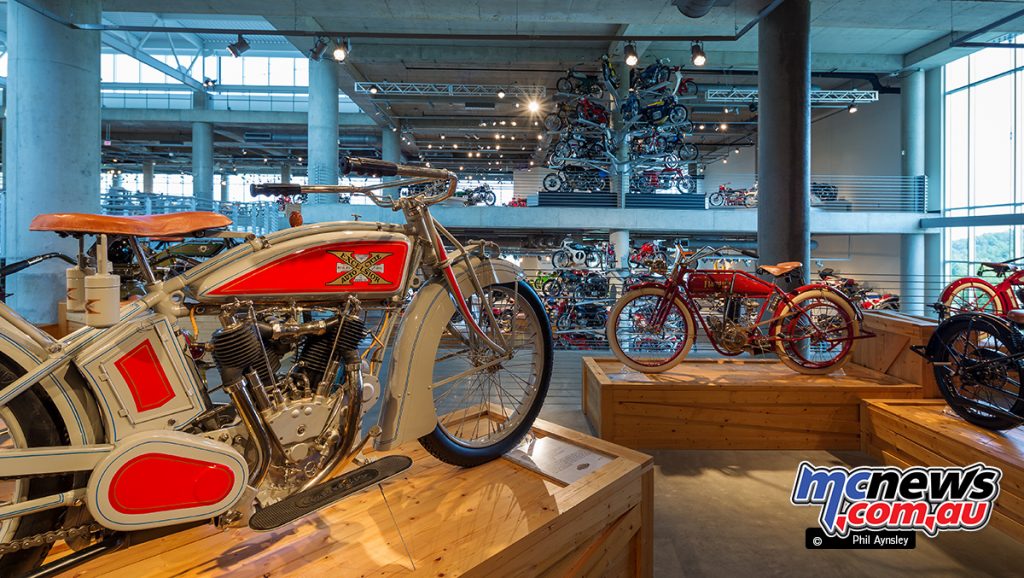
Established in Chicago in 1907, Excelsior was purchased by the Schwinn bicycle company in 1912. Five years later Henderson was also bought by Schwinn and the manufacture of both brands continued until 1931.
This 1916 model BigX was the mainstay of the Excelsior range until 1925 when it was replaced by the Super X. The BigX used a 974cc V-twin, initially with a belt final drive followed by a two-speed chain drive and finally a three speed.
The 1911 Flanders 4 was the Pontiac, Michigan company’s first design. The 483cc single produced 4hp. Unlike most contemporary belt drive bikes the Flanders had a “free wheel” clutch on the crankshaft.
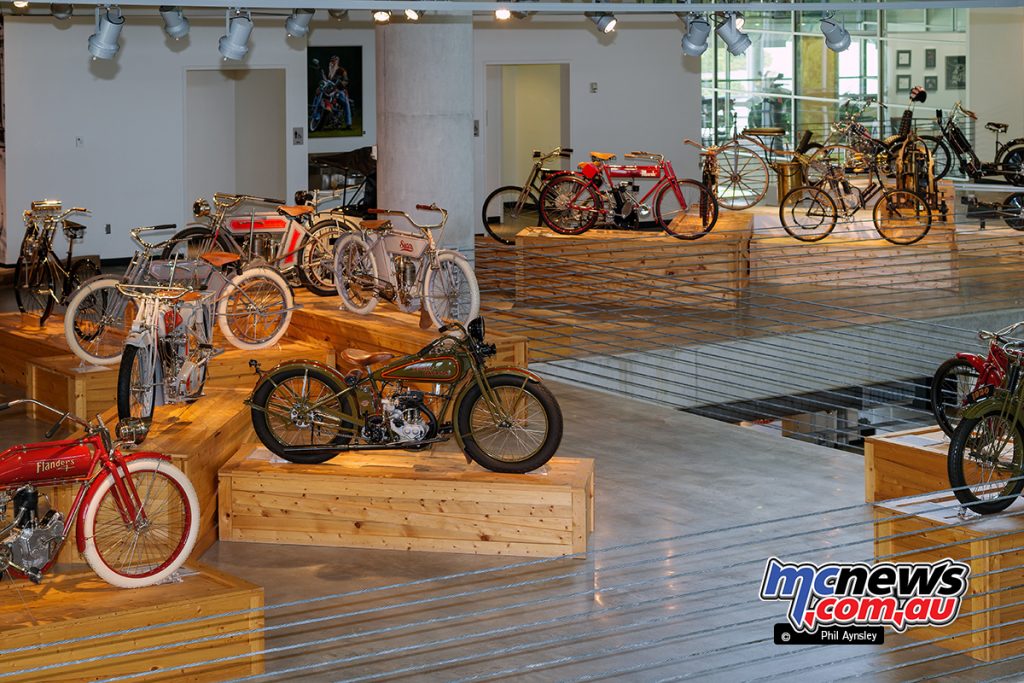
A view of the Early American display area.























